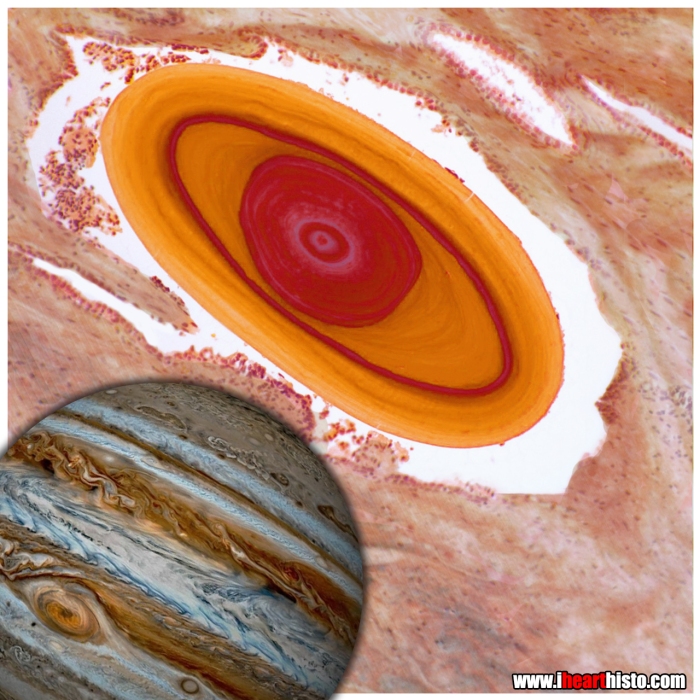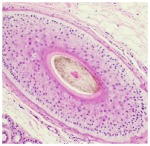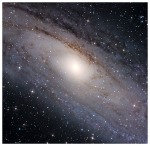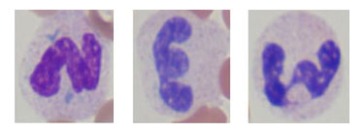
A prostate the size of Jupiter
A close up of Jupiter’s red spot was seen in an enlarged prostate biopsy!
In commemoration of the NASA spacecraft, Juno, who entered the orbit of Jupiter this week and is now poised to transmit some eagerly anticipated close up views of the planet.
The red spot is a prostatic concretion (corpora amylacea). A substance found in the lumen of the prostate gland of unknown significance. They increase in number with age and are thought to be composed of thickened prostatic secretions and shed cells. They are a useful identifying feature of prostate in both normal and pathological prostate specimens.

















